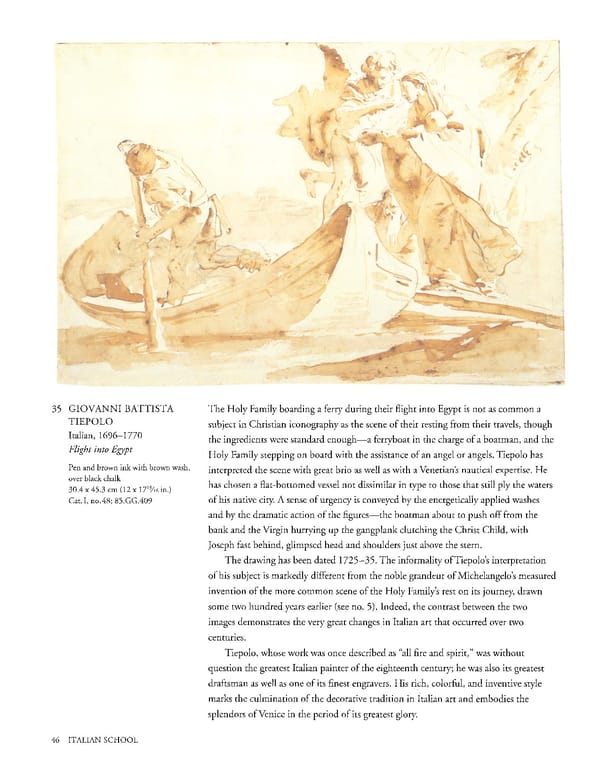35 GIOVANNI BATTISTA The Holy Family boarding a ferry during their flight into Egypt is not as common a TIEPOLO subject in Christian iconography as the scene of their resting from their travels, though Italian, 16961770 the ingredients were standard enough—a ferryboat in the charge of a boatman, and the Flight into Egypt Holy Family stepping on board with the assistance of an angel or angels. Tiepolo has Pen and brown ink with brown wash, interpreted the scene with great brio as well as with a Venetian's nautical expertise. He over black chalk has chosen a flatbottomed vessel not dissimilar in type to those that still ply the waters 30.4 x 45.3 cm (12 x 17 13/16 in.) Cat. I, no. 48; 85.GG.409 of his native city. A sense of urgency is conveyed by the energetically applied washes and by the dramatic action of the figures—the boatman about to push off from the bank and the Virgin hurrying up the gangplank clutching the Christ Child, with Joseph fast behind, glimpsed head and shoulders just above the stern. The drawing has been dated 1725—35. The informality of Tiepolo's interpretation of his subject is markedly different from the noble grandeur of Michelangelo's measured invention of the more common scene of the Holy Family's rest on its journey, drawn some two hundred years earlier (see no. 5). Indeed, the contrast between the two images demonstrates the very great changes in Italian art that occurred over two centuries. Tiepolo, whose work was once described as "all fire and spirit," was without question the greatest Italian painter of the eighteenth century; he was also its greatest draftsman as well as one of its finest engravers. His rich, colorful, and inventive style marks the culmination of the decorative tradition in Italian art and embodies the splendors of Venice in the period of its greatest glory. 46 ITALIAN SCHOOL
 Masterpieces of the Getty Museum: Drawings Page 46 Page 48
Masterpieces of the Getty Museum: Drawings Page 46 Page 48